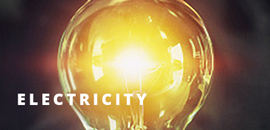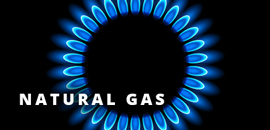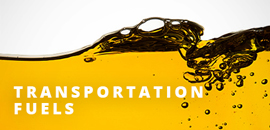PROGRESS REPORT
Electricity and natural gas consumption is being evaluated for conservation through audits - using Energy Manager reports, exposing anomalies from these reports, and ultimately for the prioritization of retro-commissioning opportunities exposed.
Water use and cost are being audited from billings recorded in Energy Manager. This is being performed monthly.
Transportation fuels are being evaluated when purchasing new vehicles. Electric carts and other electric vehicles are being evaluated on a case-by-case basis.
GOALS
The goals for energy and water conservation for the campus will be determined in large part on the results from the benchmark study and their application across the campus. However, the goals for the benchmark building will be as follows and only apply to its performance. The goals for transportation fuels are for the entire institution. Transportation fuels will be impacted by the purchase of three electric vehicles to replace three conventional vehicles (approximately 1 percent of the total fleet).
| Utility | Target Year | Benchmark Year | Percentage Goal |
|---|---|---|---|
| Water | 2023 | 2022 | 0.03 |
| Electricity | 2023 | FY2020 | 0.02 |
| Transportation Fuels | 2023 | 2022 | 0.01 |
| Natural Gas | 2022 | 2022 | 0.1 |
STRATEGY FOR ACHIEVING GOALS
We have utilized the Energy Information Administration’s Commercial Building Energy Consumption (CBEC) data to gain a broad understanding of how differing institutions’ buildings across the country perform. We have also used benchmark data from buildings on our campus to gain understanding of the different technology applications which have yielded differences in their performance. We have instituted a turndown analysis of our building to help analyze how our benchmark facility operates and to determine solutions for implementation all within the context of the building’s original design intent. We have used all these measures and will start the necessary repairs to help the building function as originally intended, all to analyze the results with a view for the larger opportunity. The result for this building will be the elimination of all wasted energy and water from its operations. It will be 40 percent more efficient, and it will be significantly more sustainable.
The natural gas goals are based on the control of natural gas boilers to be turned off during periods where no use is required. On the benchmark facility we found extensive use of natural gas from the boilers which could be eliminated during non-cold weather periods. This is made possible by using variable air volume systems that use electric heat in the fan-powered boxes.
Transportation fuel will be impacted by using three demonstration electric vehicles. These vehicles would be used for local transportation needs and would be responsible for about 1 percent of the vehicle use by the university. The university will need to install charging stations for the vehicles.
Water usage will be affected by the audit of campus billings and usages for elimination of waste. The audits will identify buildings which have use anomalies and identify possible solutions.
IMPLEMENTATION SCHEDULE
The implementation schedule for the benchmark initiative is 90 days. We have begun the initial measurement and verification (M&V) activities to establish a baseline before improvement activities begin and will analyze the results after the changes are made to the building. All large loads have been electrically sub-metered including the building main, chillers, condenser water pumps, chilled water pumps, hot water pumps, 10 air handling units and cooling tower fans. Those loads will be analyzed and evaluated against the Building Automation System HVAC sensor measurements. The HVAC boilers’ use is being analyzed against historical natural gas use. Water use will be analyzed against historical use as well.
AGENCY FINANCE STRATEGY
The financing for the project is being funded by the utility rebates from other energy efficiency improvements. The project will have a very fast payback, projected to be eight months. This means its cost will be offset by funding within this fiscal year’s savings. The expansion of the project to other facilities will greatly benefit from possible financing alternatives.
EMPLOYEE AWARENESS PLAN
We have developed a reporting tool and begun initial distribution to the college dean for distribution to his faculty and staff. We will begin communications to the university once the results are analyzed. We plan to have engineering, construction management and possibly geology students and faculty showcase the project in their academic pursuits. The plan is for the savings to be the focus: carbon, energy, water and cost savings. The intent for the student experience is to be benign except for the sustainability benefits which will be promoted to current and future students.
Electric vehicles used on campus would be liveried appropriately to enable good visibility to faculty and students.






